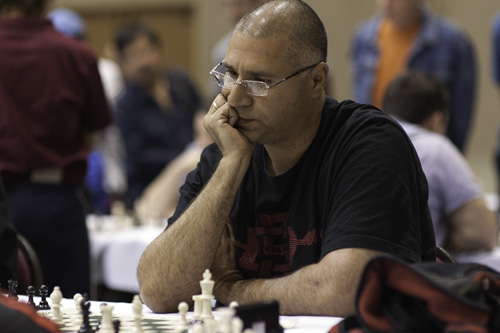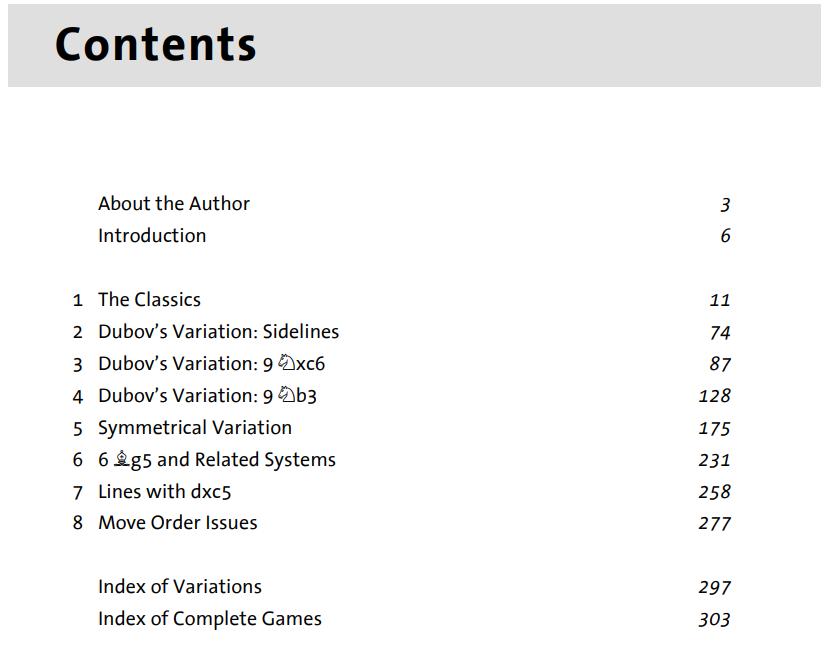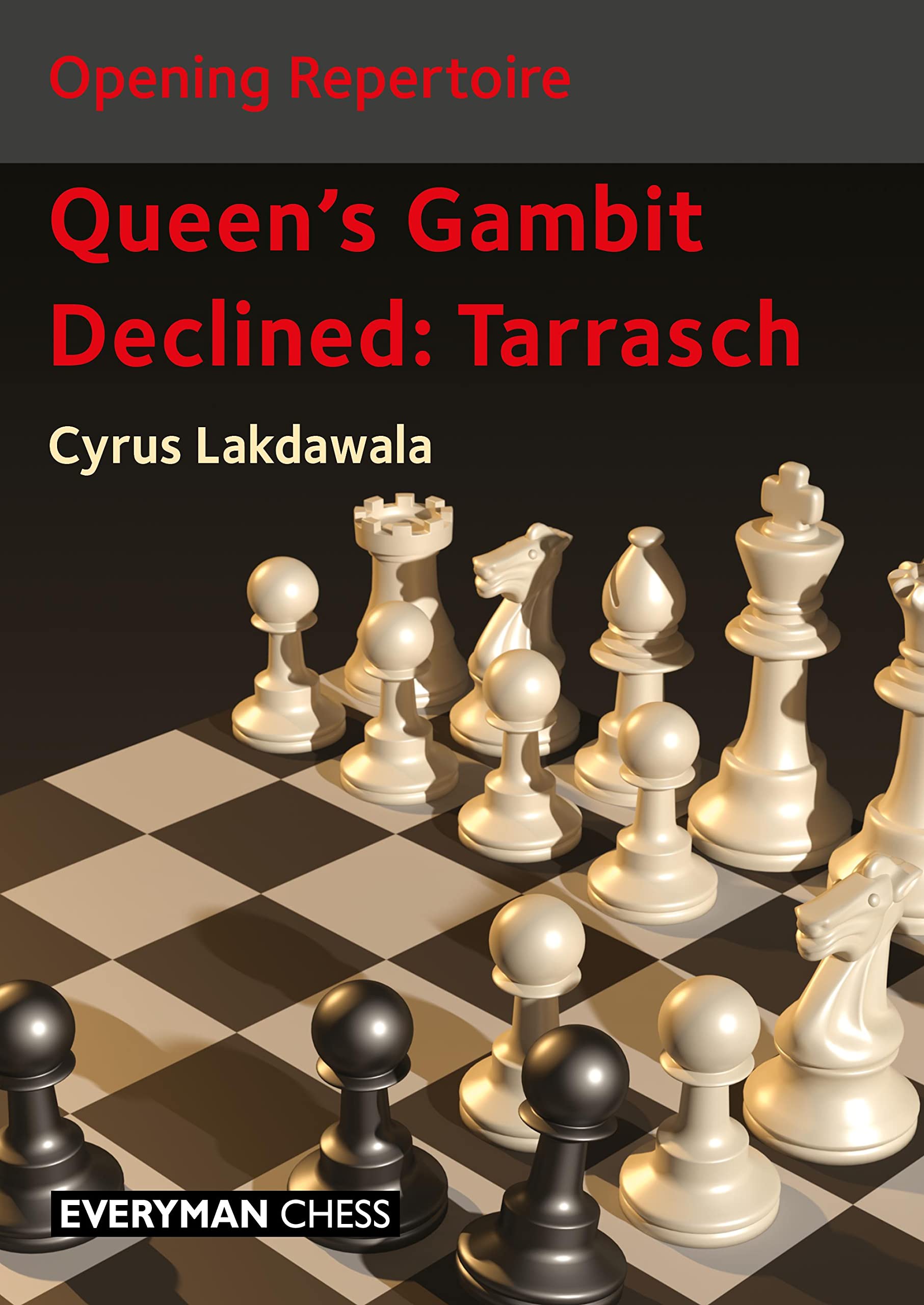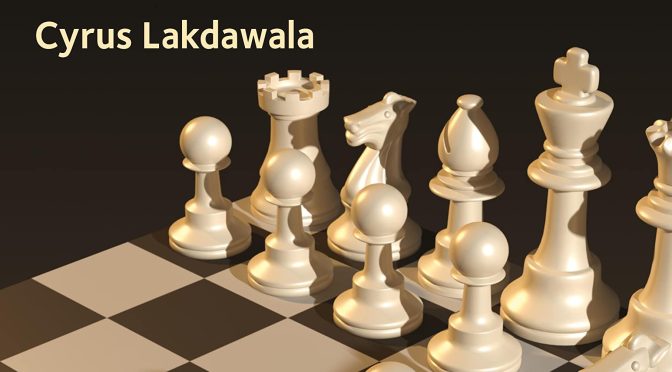Here is the publishers blurb from the rear cover:
“The Tarrasch Variation of the Queen’s Gambit Declined is a fierce counter-attacking line arising after 1 d4 d5 2 c4 e6 3 Nc3 c5. In this variation Black gains free and easy piece play but in return usually has to accept the structural weakness of an Isolated Queen’s Pawn (IQP).
In the early development of chess theory this line was somewhat frowned upon due to the vulnerability of the IQP. However, Siegbert Tarrasch, after whom the opening is named, famously declared that, “he who fears an Isolated Queen’s Pawn should give up chess”. The Tarrasch has had many powerful adherents over the years including the legendary Garry Kasparov who made much use of it in the early part of his career.
In this book Cyrus Lakdawala guides the reader through the complexities of the Tarrasch and carves out a repertoire for Black, based on a modern treatment popularised by the Russian grandmaster Daniil Dubov. He examines all aspects of this highly complex opening and provides the reader with well-researched, fresh, and innovative analysis.
Each annotated game has valuable lessons on how to play the opening and contains instructive commentary on typical middlegame plans. * A complete repertoire for Black to counter 1 d4. * The question and answer approach provides an excellent study method.”
About the author:

“Cyrus Lakdawala is an International Master, a former National Open and American Open Champion, and a six-time State Champion. He has been teaching chess for over 40 years, and coaches some of the top junior players in the U.S.”
As with every recent Everyman Chess publication high quality paper is used and the printing is clear. Each diagram is clear as is the instructional text. Figurine algebraic notation is used throughout. The usual and reliable formatting from Brighton-based typesetter IM Byron Jacobs is employed.
The diagrams do not have a “to move” indicator or any kind of caption so you will need to work out for yourself how they relate to the text that they are embedded in. However, this is fairly obvious.
There is a helpful Index of Variations and an Index of completed games.
The table of contents is:

Before we continue it is worth taking a look at the pdf extract which includes the Contents, Preface and pages 87 – 108.
Everyman (and Cyrus) kicks-off in Chapter 1, The Classics with its most welcome trait of laying out the historical development of an opening by detailing twelve significant games including this old favourite from 1969:
We very much like this feature of Everyman books and long may it continue!
In reviewing books from this author it is traditional to discuss his “Marmite” annotation style. In general, we are presented with a grammar and vocabulary rich narrative that gives you the impression that the author is coaching you one-to-one with a mixture of humour and superlatives. There is never a dull moment with his chatty style, of that we can be sure!
For example in discussing Larsen-Kasparov, Brussels, 1987
after Larsen’s 37 hxg7! Cyrus writes:
“Exercise (critical decision): Even the serpent from the Garden of Eden would be impressed by Larsen’s talent for manipulative deception. His last move a good practical try in an objectively lost position. Should Black play 37…Bxg7, 37…Be7. or 37…Qaa2?”
Indeed, some reviewers become so distracted by the authors idiosyncratic style that they forget to review the content of the book!
The USP (“Unique Selling Point” for our younger readers) of this foray into Tarrasch land is to promote an alternative and albeit more active deployment of Black’s King’s bishop to c5 instead of the traditional e7. This nuance was first campaigned with success by Carl Schlecter versus Milan Vidmar at Budapest 1912 a year after becoming a novelty / TN from Georg Salwe who first punted it at Karlovy Vary in 1911. Since Netanya 2019 Daniil Dubov has played this line with success along with other notables such as Nodirbek Abdusattorov, Dommaraju Gukesh and Dennis Wagner to name but a few.
We must be grateful to the author for choosing to name this variation after Dubov rather than say Abdusattorov (!) but we think we could all appreciate a Wagner Variation / Cycle or two!
So, the Dubov Variation is:
which is, in turn an offshoot of the highly popular and reliable anti-IQP Rubinstein Variation (6.g3).
Chapter Two dispenses (via Games 13 – 15) with Whites various ninth move alternatives before focussing in Chapter Three on 9 Nxc6 (seven games) followed by the more critical 9 Nb3 (nine games) in Chapter Four.
To complete Black’s Dubov-based Tarrasch repertoire there is a nine game treatment via Chapter Five of the so-called Symmetrical Variation:
followed by an examination of the popular 6 Bg5 line:
and then positions resulting from White capturing on c5. Lastly the author tidies up by discussing the usual move order issues caused by White delaying development of the Queen’s knight.
Looking at the increasing popularity of the Dubov Variation this book is about as topical as one can get and its likely there will a gradual shift from …Be7 to …Bc5 and eventually this will filter down from the top to less giddy heights.
A constant theme of the book is learning through reinforcement of ideas and the solving of multiple combinational, tactical and positional understanding exercises.
Is there a final verdict on this line? No, and even if there was I would encourage you to obtain this book to find out!
As a taster here is a very recent smooth performance from Dubov himself:
Enjoy!
John Upham, Cove, Hampshire, 26th February, 2023

Book Details :
- Paperback : 304 pages
- Publisher: Everyman Chess (16 Jan. 2023)
- Language: English
- ISBN-10:1781946965
- ISBN-13:978-1781946961
- Product Dimensions: 17.3 x 1.7 x 23.8 cm
Official web site of Everyman Chess


